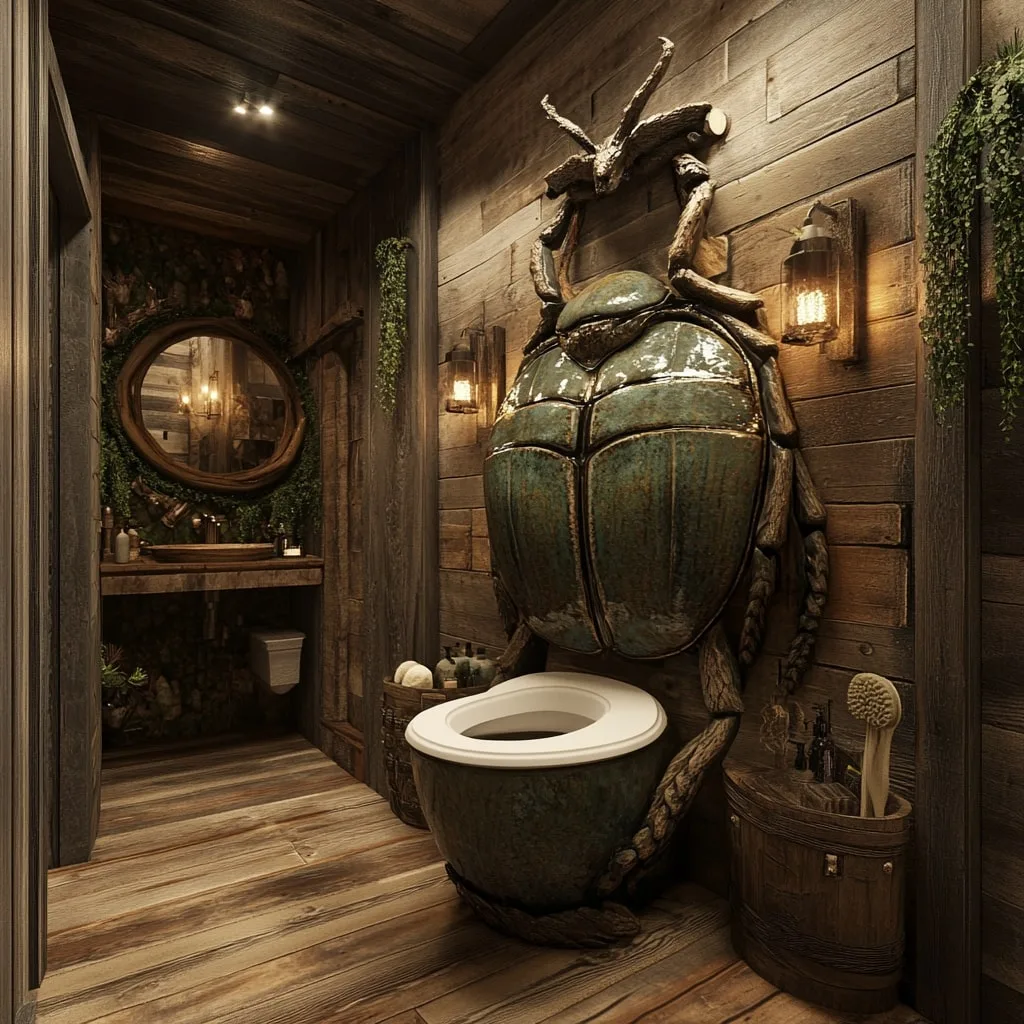In the quest for more sustainable and efficient sanitation solutions, designers and engineers are increasingly turning to an unlikely source of inspiration: insects. These tiny creatures have evolved sophisticated waste management systems over millions of years, offering valuable blueprints for human sanitation innovation. Insect-inspired toilets represent a fascinating frontier in biomimicry—the practice of emulating nature’s time-tested patterns and strategies to solve human problems.
From the water-repellent surfaces of beetle exoskeletons to the remarkable waste processing abilities of dung beetles, nature has already perfected many systems that human toilet designers are now adapting. These innovations are particularly relevant as we face growing water scarcity, sanitation challenges in developing regions, and the need to reduce the environmental footprint of our most basic facilities.
This article explores how insect-inspired toilets are revolutionizing sanitation through biomimetic design, addressing critical challenges in water conservation, odor control, waste processing, and accessibility. We’ll examine specific insect adaptations and how they’re being translated into next-generation toilet technology that could transform our approach to one of humanity’s most fundamental needs.
The Biomimicry Advantage in Sanitation

Understanding Biomimicry in Bathroom Design
Biomimicry involves studying nature’s models and then imitating or taking inspiration from these designs and processes to solve human problems. In sanitation, this approach offers several distinct advantages:
- Sustainability: Natural systems typically operate in closed loops with minimal waste—something human sanitation desperately needs.
- Efficiency: Evolution has refined insect processes over millions of years, resulting in highly optimized solutions.
- Resilience: Biological systems have adapted to function in diverse and challenging environments, offering models for toilets that work in various conditions.
- Simplicity: Many natural solutions achieve complex functions through elegant simplicity, potentially reducing manufacturing costs and maintenance needs.
Why Insects Make Excellent Sanitation Models
Insects, in particular, offer valuable inspiration for toilet design because they:
- Process waste materials rapidly and efficiently
- Operate with minimal water
- Control odors effectively
- Function in diverse environments
- Often transform waste into valuable resources
These characteristics align perfectly with the most pressing challenges in modern sanitation design.
Water Conservation Innovations
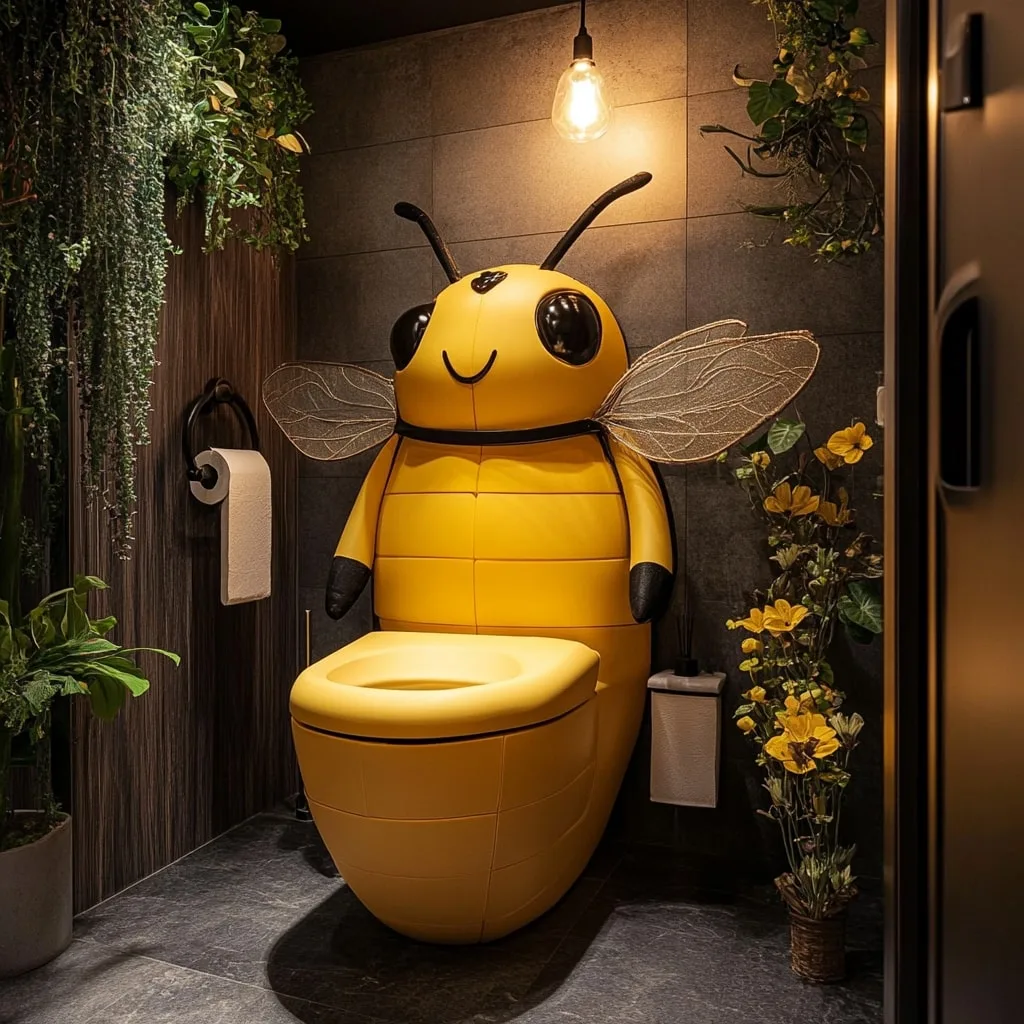
Beetle-Inspired Hydrophobic Surfaces
The Namib desert beetle’s shell has specialized bumps that collect water from fog while the surrounding surface remains extremely water-repellent. This adaptation has inspired toilet bowl coatings that require significantly less water for cleaning.
Several manufacturers have developed ultra-hydrophobic toilet surfaces based on this principle. These surfaces cause water and waste to slide off completely, reducing or eliminating the need for flushing in some designs. Tests show these coatings can reduce water usage by up to 90% compared to conventional toilets, making insect-inspired toilets particularly valuable in water-scarce regions.
Butterfly Wing Water Management
Butterfly wings have microscopic scales that direct water flow with remarkable precision. Engineers have adapted this design into special channeling systems in toilet bowls that maximize cleaning efficiency while minimizing water usage.
The “Butterfly Flush” toilet incorporates these principles with a specially designed interior surface that distributes a small amount of water in a precise pattern, achieving complete cleaning with just 0.8 liters per flush compared to the 6-9 liters used by conventional toilets.
Odor Control Solutions
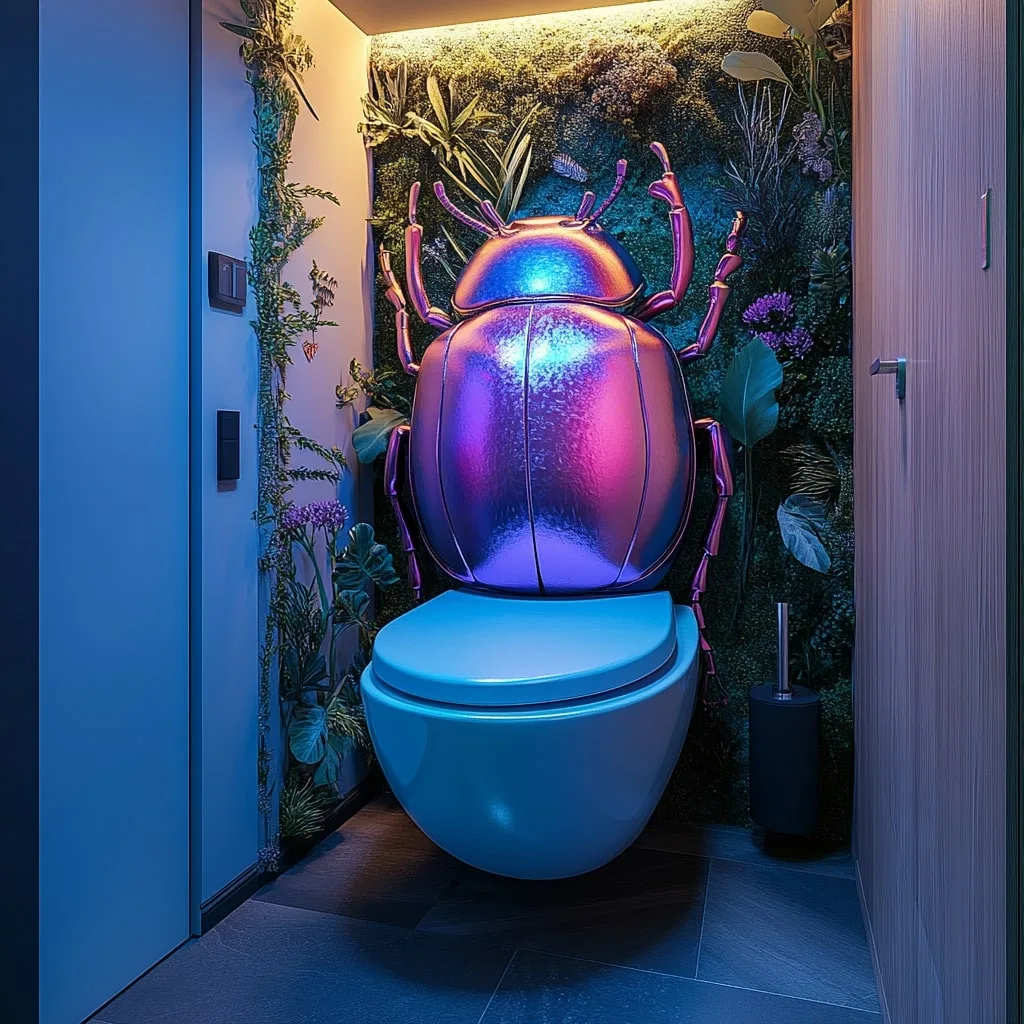
Ant Colony Ventilation Principles
Ant colonies maintain air quality in their underground chambers through sophisticated passive ventilation systems. These systems have inspired new approaches to bathroom ventilation that eliminate odors without requiring electric fans or chemical air fresheners.
One example is the “AntVent” toilet system, which incorporates specially designed air channels based on ant nest architecture. These channels create natural convection currents that continuously direct odors away from the bathroom space and filter them through microbial mats inspired by the fungal gardens some ant species maintain.
Termite Mound Microclimate Management
Termites build mounds with remarkable temperature and humidity control through passive design. Toilet designers have adapted termite ventilation principles to create self-regulating systems that adjust airflow based on humidity and temperature conditions.
The “TermiToilet” uses these principles to maintain optimal bathroom air quality and humidity levels while breaking down odor-causing compounds through specialized microbial communities similar to those found in termite guts.
Waste Processing Innovations

Dung Beetle Composting Systems
Dung beetles are nature’s waste management specialists, capable of processing animal waste into nutrient-rich soil amendments. Several insect-inspired toilet designs now incorporate similar principles for on-site waste processing.
The “Scarab System” mimics dung beetle activity by combining mechanical separation with biological processing. After use, waste materials are automatically mixed with specialized microbes and carbon-rich materials. The system accelerates decomposition, producing safe, odor-free compost within weeks rather than months, addressing sanitation needs while creating a valuable resource.
Black Soldier Fly Larval Processing
Black soldier fly larvae can rapidly consume and transform organic waste. Innovative toilet systems are now incorporating these insects as part of a biological treatment approach.
The “FlyProcess Toilet” directs human waste to a contained chamber where black soldier fly larvae consume it, reducing volume by up to 95% while producing protein-rich larvae that can be harvested for animal feed. This creates a valuable output from what was previously considered only waste, exemplifying the circular economy principles often found in natural systems.
Structural Design Innovations
Honeycomb Strength Principles
Honeycomb structures, as built by bees, provide maximum strength with minimal material—an important consideration for portable and emergency toilet facilities.
The “HexaLoo” portable toilet uses honeycomb structural principles to create incredibly strong yet lightweight units that can be easily transported to disaster areas or remote locations. The hexagonal reinforcement allows for 40% less material use while increasing structural integrity by 60% compared to conventional designs.
Spider Web Tension Systems
Spider webs use tension rather than compression for structural support. This principle has been adapted for innovative toilet installations in challenging environments.
The “WebSupport” toilet system uses tensioned cables in a spider-web configuration to securely mount toilets in unstable terrain, disaster areas, or temporary installations. This approach allows for rapid deployment while ensuring structural stability with minimal ground preparation.
Smart Monitoring and Maintenance
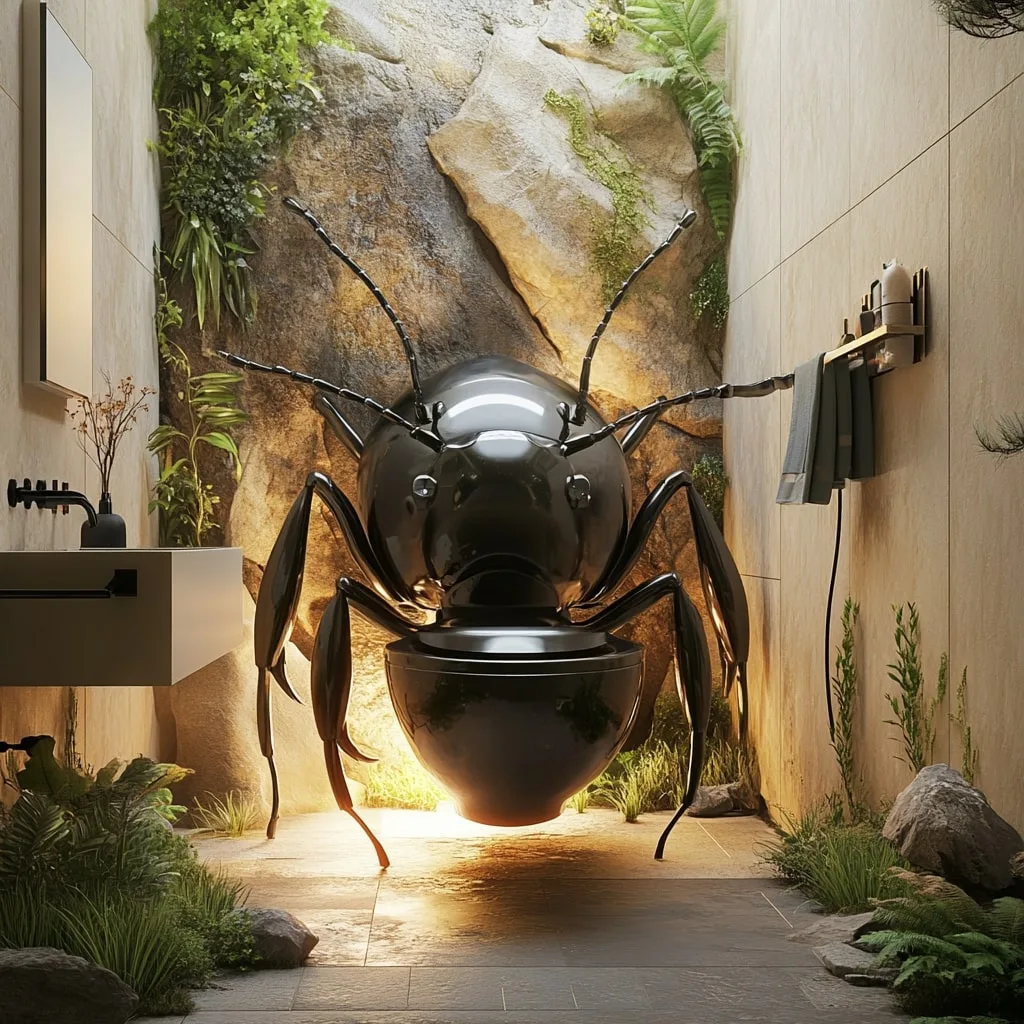
Insect Sensory Systems
Many insects have highly specialized sensory organs that detect minute changes in their environment. This capability has inspired advanced monitoring systems for public toilet facilities.
The “SensePod” toilet incorporates sensors modeled after insect antennae to detect ammonia levels, humidity, temperature, and usage patterns. These data enable predictive maintenance, optimized cleaning schedules, and early detection of potential issues before they become problems.
Social Insect Maintenance Models
Ant and termite colonies maintain their structures through continuous, distributed maintenance activities. This approach has influenced new paradigms for toilet maintenance in public facilities.
The “SwarmClean” system uses multiple small, autonomous cleaning robots that work collaboratively like a social insect colony, continuously maintaining bathroom facilities instead of relying on periodic intensive cleaning. Each robot specializes in different aspects of maintenance, collectively ensuring consistently clean facilities with fewer resources.
Applications in Global Contexts

Rural and Developing World Solutions
Insect-inspired toilets offer particular promise in regions lacking water and sewage infrastructure. The “BeetleSan” toilet system requires no water connection and processes waste on-site using principles adapted from dung beetles and termites. Field tests in rural communities in Africa and Asia have shown 95% user acceptance and significant reductions in sanitation-related diseases.
Urban Water Conservation
In water-stressed cities, retrofitting buildings with insect-inspired toilet systems can dramatically reduce water consumption. The city of Perth, Australia, implemented butterfly-inspired low-flow toilets in municipal buildings, achieving a 76% reduction in water usage and saving approximately 12 million liters annually.
Emergency and Disaster Response
Following natural disasters, sanitation presents an immediate challenge. The “HexaLoo” rapid deployment units based on honeycomb structures have been used successfully following earthquakes in Nepal and hurricanes in the Caribbean, providing sturdy, hygienic facilities that could be assembled in under 15 minutes.
Future Directions in Insect-Inspired Toilet Design
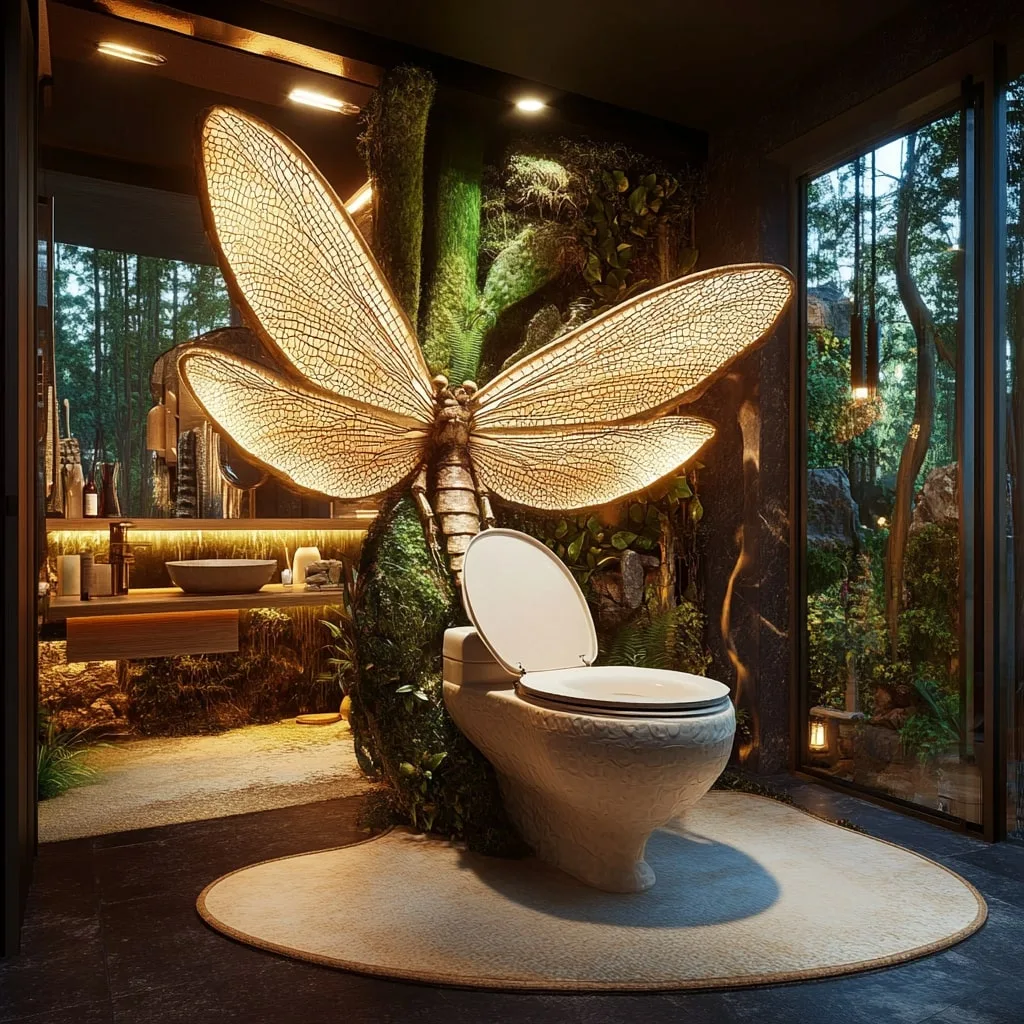
Integration with Smart Home Systems
The next generation of insect-inspired toilets will likely feature deeper integration with smart home systems. Monitoring capabilities inspired by insect sensory systems could track health metrics, detect signs of illness, and provide early warning of potential health issues through waste analysis.
Self-Healing Materials
Some insects produce self-healing cuticles that repair damage automatically. Researchers are developing similar self-healing materials for toilet components to extend product lifespans and reduce maintenance requirements.
Energy Generation Potential
Several insects and their symbiotic microbes generate energy from waste processing. Future toilet designs may incorporate microbial fuel cells based on these systems, potentially allowing toilets to generate electricity from waste processing to power their own functions or contribute to household energy needs.
Implementation Challenges and Solutions
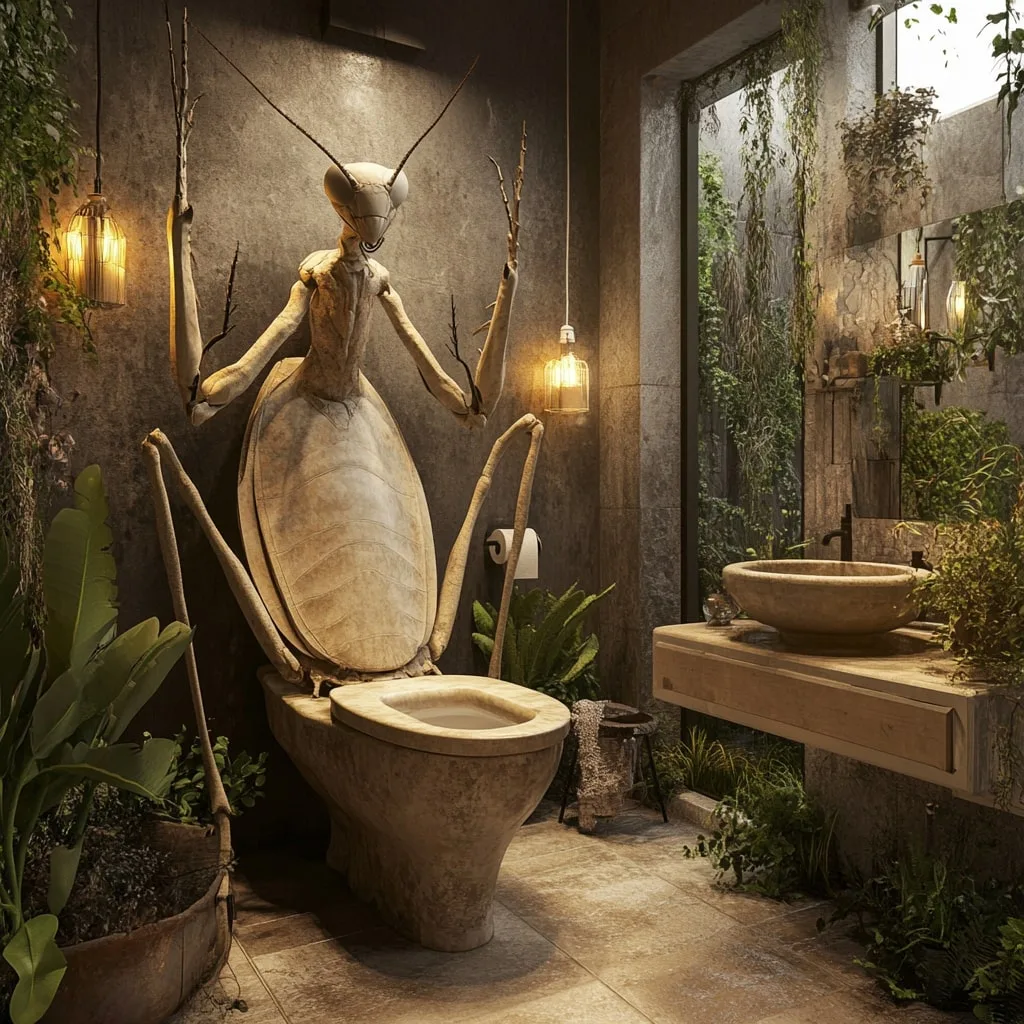
Cultural Adoption Barriers
Despite their advantages, insect-inspired toilets face cultural adoption barriers in some regions. Successful implementation requires:
- Education campaigns highlighting benefits and addressing misconceptions
- Culturally sensitive designs that accommodate local preferences and practices
- Community involvement in implementation planning and feedback loops
Technical Integration Challenges
Retrofitting existing buildings with these innovative systems presents technical challenges. Modular designs like the “AdaptaPod” allow for gradual implementation without requiring complete bathroom renovation.
Economic Considerations
While insect-inspired toilets often offer long-term savings through reduced water usage and maintenance, initial costs can be higher than conventional systems. Several approaches are addressing this challenge:
- Pay-for-performance models where manufacturers guarantee water savings
- Community-scale implementations that reduce per-unit costs
- Carbon credit financing for systems that significantly reduce emissions from waste processing
The Promising Future of Insect-Inspired Sanitation
Insect-inspired toilets represent a profound shift in how we approach one of humanity’s most basic needs. By learning from nature’s time-tested designs, we’re developing sanitation solutions that are more sustainable, efficient, and adaptable than conventional approaches.
These innovations address critical global challenges: water scarcity, inadequate sanitation infrastructure, and the environmental impact of human waste. From water-conserving surfaces based on beetle exoskeletons to waste processing systems inspired by dung beetles, these biomimetic technologies demonstrate how ancient natural wisdom can solve modern problems.
As climate change intensifies water stress in many regions and urban populations continue to grow, insect-inspired toilets offer a promising path forward. They remind us that sometimes the best solutions don’t come from increasingly complex technology but from careful observation of the natural world that has been solving similar problems for millions of years.
The future of sanitation may well be inspired by the humble insects beneath our feet—creatures that have perfected the art of efficient resource use and waste management through eons of evolution. In adopting their strategies, we’re not just designing better toilets; we’re reconnecting human systems with natural principles that sustain all life on our planet.

